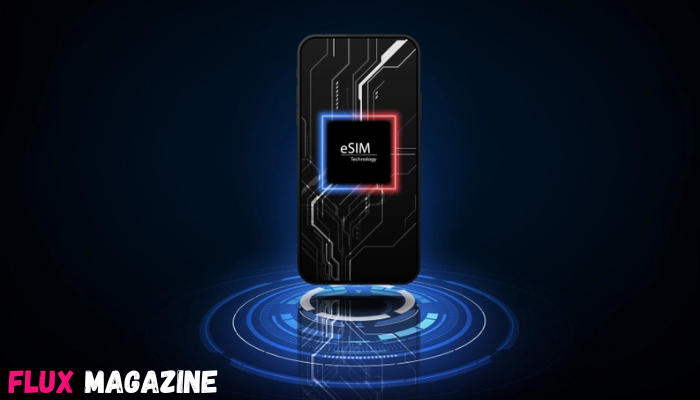The small plastic card that has been essential to mobile phones for over 30 years is rapidly becoming obsolete. As our world becomes increasingly connected and mobile technology continues to evolve, embedded SIM cards (eSIMs) are revolutionizing how we think about staying connected across the globe. This shift from physical SIM cards to digital eSIM technology represents the most significant change in mobile connectivity since smartphones first appeared. While many consumers may not yet realize it, this transformation is already happening in their pockets, quietly reshaping the entire telecommunications landscape.
How Mobile Connectivity Evolved
To understand why eSIMs matter, we need to look at how mobile technology has developed over the decades. The journey began in 1991 when the first SIM card was introduced. That original card was the size of a credit card – nearly 100 times larger than today’s nano-SIM. Over the years, SIM cards got progressively smaller: from full-size to mini, then micro, and finally nano-SIM.
Each size reduction reflected broader trends in technology, the constant push toward making devices thinner, lighter, and more efficient. But even the tiniest nano-SIM still required physical space inside devices and created limitations for manufacturers trying to design sleeker, more waterproof phones.
The eSIM represents the logical next step in this evolution. Instead of a removable plastic card, eSIM technology uses a small chip permanently built into the device. This chip can be programmed and reprogrammed digitally, eliminating the need for physical swapping when changing carriers or traveling internationally.
The Technical Revolution Behind eSIM
At its core, an eSIM is a tiny chip soldered directly onto a device’s circuit board. Unlike traditional SIM cards that store carrier information on a removable piece of plastic, eSIMs store multiple carrier profiles digitally and can switch between them through software.
This seemingly simple change has profound implications. eSIMs conform to global standards set by the GSMA (the organization that governs mobile communications), ensuring they work worldwide while providing enhanced security through advanced encryption.
Perhaps most importantly, eSIM technology allows multiple carrier profiles to exist on a single device simultaneously. A business traveler could have their home carrier profile alongside international data plans, switching between them instantly based on location, cost, or coverage needs.
The embedded nature of eSIMs also eliminates common points of failure. There are no bent cards, damaged connectors, or lost SIMs to disrupt connectivity. For device manufacturers, this means more space for batteries, better waterproofing, and sleeker designs.
Industry Transformation at Scale
The telecommunications industry is experiencing dramatic changes as eSIM adoption accelerates worldwide. Major carriers are rethinking their business models, moving away from physical distribution networks toward digital-first strategies.
Traditional carrier stores, once essential for SIM distribution and device activation, are evolving into experience centers rather than transaction hubs. The familiar ritual of visiting a store to get a new SIM card is being replaced by instant digital provisioning that can happen anywhere with an internet connection.
This transformation particularly benefits emerging markets where physical telecommunications infrastructure has been limited. eSIM technology allows carriers to reach previously inaccessible populations without investing in extensive physical distribution networks. When connectivity can be delivered digitally, geographic and logistical barriers begin to dissolve.
For carriers, eSIM technology also enables new business models. Instead of competing primarily on network coverage, carriers can now offer specialized services: data-only plans for IoT devices, temporary travel packages, or flexible month-to-month options without long-term contracts.
Consumer Benefits and New Possibilities
For everyday users, eSIM technology offers unprecedented flexibility and convenience. International travelers no longer need to hunt for local SIM cards in airport shops or pay exorbitant roaming charges. Instead, they can download and activate local carrier profiles before even leaving home.
The technology is particularly transformative for digital nomads and frequent business travelers who need reliable connectivity across multiple countries. Services like Truely exemplify this new paradigm, offering global connectivity solutions that work seamlessly across hundreds of destinations through a single digital platform.
Business users benefit from the ability to maintain separate personal and work profiles on the same device. Parents can easily add their children to family plans without needing to visit stores. Tech enthusiasts can experiment with different carriers and plans without the commitment and hassle of physical SIM swapping.
The environmental impact shouldn’t be overlooked either. Eliminating billions of plastic SIM cards and their packaging represents a meaningful reduction in electronic waste. When multiplied across the global mobile user base of over 5 billion people, this digital transformation delivers significant environmental benefits.
Security Advantages in a Digital World
eSIM technology delivers enhanced security features compared to conventional SIM cards. Physical SIM cards can be stolen, cloned, or intercepted during shipping. eSIMs, being embedded in devices and provisioned through encrypted digital channels, provide multiple layers of protection against these risks.
The remote provisioning process uses advanced cryptographic techniques to ensure that carrier profiles can only be installed on authorized devices. This makes eSIM-enabled devices more secure for business users, government employees, and anyone concerned about communication privacy.
Additionally, if a device is lost or stolen, eSIM profiles can be remotely deactivated and transferred to new devices much faster than traditional SIM replacement processes. This rapid response capability minimizes security exposure and reduces downtime.
Challenges and Market Adoption
Despite clear advantages, eSIM adoption faces several challenges. Many consumers remain unaware of the technology or how to use it. Carrier support varies significantly between regions, with some markets having robust eSIM ecosystems while others lag.
Device compatibility is improving rapidly, but it isn’t universal yet. While most flagship smartphones now include eSIM capabilities, many mid-range and budget devices still rely solely on physical SIM cards. Wearables, tablets, and laptops are increasingly adopting eSIM as a standard feature.
Some carriers have been slow to embrace eSIM technology, viewing it as a threat to traditional customer lock-in strategies. However, competitive pressure and consumer demand are accelerating adoption across the industry.
The Internet of Things Connection
eSIM technology is proving crucial for the expanding Internet of Things (IoT) ecosystem. Connected cars, smart home devices, industrial sensors, and medical equipment all benefit from embedded connectivity that doesn’t require physical SIM management.
For IoT deployments involving thousands or millions of devices, the ability to manage connectivity remotely becomes essential. eSIM technology enables manufacturers to ship devices globally and activate them locally, reducing logistics complexity and costs.
Smart city initiatives, autonomous vehicles, and industrial automation all depend on reliable, manageable connectivity at scale. eSIM technology provides the foundation for these applications to operate efficiently across different regions and carrier networks.
Looking Ahead: The 5G and Beyond Era
As 5G networks continue expanding globally, eSIM technology becomes even more valuable. The high speeds and low latency of 5G create new applications that demand seamless, reliable connectivity. eSIMs enable devices to automatically switch between different 5G networks to maintain optimal performance.
Looking toward 6G and future networking technologies, embedded connectivity will likely become even more sophisticated. We may see eSIMs that can automatically negotiate the best available network conditions, pricing, and features based on user preferences and application requirements.
The convergence of eSIM technology with edge computing, artificial intelligence, and advanced networking protocols promises to create connectivity experiences that are not just seamless but truly intelligent.
The Inevitable Digital Future
The shift from physical SIM cards to eSIM technology reflects broader digital transformation trends affecting every industry. Just as streaming replaced physical media and cloud storage supplanted local hard drives, embedded connectivity represents the natural evolution toward more efficient, flexible, and sustainable technology solutions.
For consumers, this means greater choice, convenience, and control over their connectivity. For businesses, it enables new services and business models previously impossible with physical SIM constraints. For the environment, it represents a meaningful step toward reducing electronic waste.
The question isn’t whether eSIM technology will replace traditional SIM cards, but how quickly this transformation will occur. As device manufacturers continue adopting eSIM capabilities and carriers expand their digital offerings, the tipping point toward full eSIM adoption appears closer than many realize. The future of global connectivity is digital, embedded, and infinitely more flexible than the plastic cards we’ve carried for three decades. That future is already arriving, one device at a time.


















Show Comments (0)